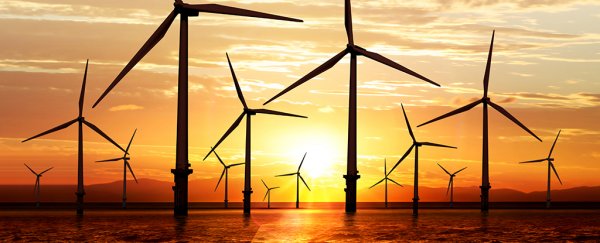We're hearing plenty of encouraging stories about the growth of renewable energy and a reduction on our reliance on fossil fuels, but it's sometimes difficult to see the bigger picture.
So how's this for a benchmark: last Sunday, 8 May, at 11am in the morning, 95 percent of Germany's power demands were met by renewable energy sources. Quite an achievement for one of the most developed and industrialised nations in the world.
As John Fitzgerald Weaver reports for Electrek, a sunny day and strong winds helped contribute to the record-breaking high. Energy consumption in Germany at the time came in at 57.8 gigawatts - solar power met 45.2 percent of that total, wind power 36 percent, biomass power 8.9 percent, and hydropower plants 4.8 percent.
"Power prices actually went negative for several hours," Michael J. Coren from Quartz reports, "meaning commercial customers were being paid to consume electricity."
Germany is in the middle of an initiative called Energiewende ("energy transition"), through which the government hopes to reduce greenhouse gas emissions by 80 to 95 percent and hit a target of a 60 percent share for renewable energy sources before 2050.
Last Sunday's milestone is certainly promising, but to hit 60 percent year-round, Germany needs to improve the efficiency of its technology and find new ways of storing energy for days that aren't so sunny and windy. It's the same challenge facing countries across the world.
Right now, there's a north/south split in the country, Ari Phillips reports at Climate Progress, with wind turbines located mostly in the north of Germany and solar power plants in the south. The authorities also want to phase out nuclear power by 2022.
With the country making gains towards its goal, experts think Germany is a good role model for other developed nations.
"Manufacturing accounts for much more of the German economy than the American economy, and they have 80 million people - much larger than a country like Denmark, which gets more of its power from renewables but has a much smaller industrial base, and has a population of 5.5 million people," author Osha Gray Davidson, who has written a book on Energiewende, told Climate Progress.
We've seen some other promising targets hit in recent years, too. In 2015, Scotland generated more than half its energy from renewables, and Uruguay already gets 95 percent of its power from renewables, while a large part of Austria has hit 100 percent.
Renewable energy capacity is now being added faster than the alternatives, and across the globe, we're on track to get 26 percent of our energy from natural sources by 2020.
There's still plenty of work ahead, but go ahead and get excited about how far we've come. It's pretty damn cool.
